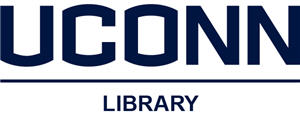Document Type
Article
Disciplines
Life Sciences
Abstract
The relationships between hydrothermal vent tubeworms and sulfide-oxidizing bacteria have served as model associations for understanding chemoautotrophy and endosymbiosis. Numerous studies have focused on the physiological and biochemical adaptations that enable these symbioses to sustain some of the highest recorded carbon fixation rates ever measured. However, far fewer studies have explored the molecular mechanisms underlying the regulation of host and symbiont interactions, specifically those mediated by the innate immune system of the host. To that end, we conducted a series of studies where we maintained the tubeworm, Ridgeia piscesae, in high-pressure aquaria and examined global and quantitative changes in gene expression via high-throughput transcriptomics and quantitative real-time PCR (qPCR). We analyzed over 32,000 full-length expressed sequence tags as well as 26 Mb of transcript sequences from the trophosome (the organ that houses the endosymbiotic bacteria) and the plume (the gas exchange organ in contact with the free-living microbial community). R. piscesae maintained under conditions that promote chemoautotrophy expressed a number of putative cell signaling and innate immunity genes, including pattern recognition receptors (PRRs), often associated with recognizing microbe-associated molecular patterns (MAMPs). Eighteen genes involved with innate immunity, cell signaling, cell stress and metabolite exchange were further analyzed using qPCR. PRRs, including five peptidoglycan recognition proteins and a Toll-like receptor, were expressed significantly higher in the trophosome compared to the plume. Although PRRs are often associated with mediating host responses to infection by pathogens, the differences in expression between the plume and trophosome also implicate similar mechanisms of microbial recognition in interactions between the host and symbiont. We posit that regulation of this association involves a molecular “dialogue” between the partners that includes interactions between the host’s innate immune system and the symbiont.
Recommended Citation
Nyholm, Spencer V. and Bunce, Corey, "Expression and Putative Function of Innate Immunity Genes under in situ Conditions in the Symbiotic Hydrothermal Vent Tubeworm Ridgeia piscesae" (2012). Open Access Author Fund Awardees' Articles. 4.
https://digitalcommons.lib.uconn.edu/libr_oa/4



Comments
Originally published in : PLoS ONE 7(6): e38267. doi:10.1371/journal.pone.0038267 Copyright: 2012 Nyholm et al. This is an open-access article distributed under the terms of the Creative Commons Attribution License, which permits unrestricted use, distribution, and reproduction in any medium, provided the original author and source are credited